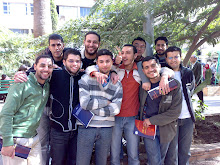Cancers are like any other diseases that affect humans ,they are more prevalent in certain age groups and very rare in other ages like breast cancer with is more common in older women than teen girls which maybe related to certain causes or the exact nature of the cancer itself.
The types of cancers teens get have one thing in common: cells, the basic components or "building blocks" of the human body. Cancer occurs when cells develop abnormally and grow in an uncontrolled way. Read on to learn more about some types of cancer that teens may get, including warning signs and symptoms and how these cancers can be treated.
Osteosarcoma
Osteosarcoma (pronounced: os-tee-oh-sar-koh-muh) is the most common type of bone cancer. In teens, it can sometimes appear during their growth spurts. Osteosarcoma affects twice as many guys as girls and tends to show up in people who are taller than average. In most cases, there is no known cause for osteosarcoma.
The most common symptoms of osteosarcoma are pain and swelling in an arm or leg that is sometimes accompanied by a lump. Some people have more pain at night or when they exercise. Osteosarcoma is most often found in the bones around the knee but can occur in other bones as well. In some cases, a tumor can spread or metastasize to the lungs and other bones. (Metastasize is the word doctors use when cells from a tumor break away from the original cancer site and travel to a different tissue or organ.)
Treatment for osteosarcoma usually involves chemotherapy (medication that kills cancer cells) as well as surgery to remove the tumor. A doctor may perform limb-salvage surgery, where the bone that has cancer is removed and the limb (usually an arm or leg) is saved from amputation by filling the gap with a bone graft or special metal rod. In rare cases, a doctor may need to amputate (remove) part or all of the limb to fight the cancer.
Losing a limb can be devastating, especially for teens who are already dealing with body changes. Counseling and physical therapy (also called physical rehabilitation) can both be helpful in this situation. People who have amputations are usually fitted with a prosthesis (pronounced: prahs-thee-sus), or artificial limb. Most teens with a prosthesis are able to return to normal activities - even sports.
Most people develop side effects, such as hair loss, bleeding, infections, and heart or skin problems, from medicines used in chemotherapy treatment for osteosarcoma. Chemotherapy may also increase the person's risk of developing other cancers in the future. The good news is that most teens with osteosarcoma do recover.




No comments:
Post a Comment